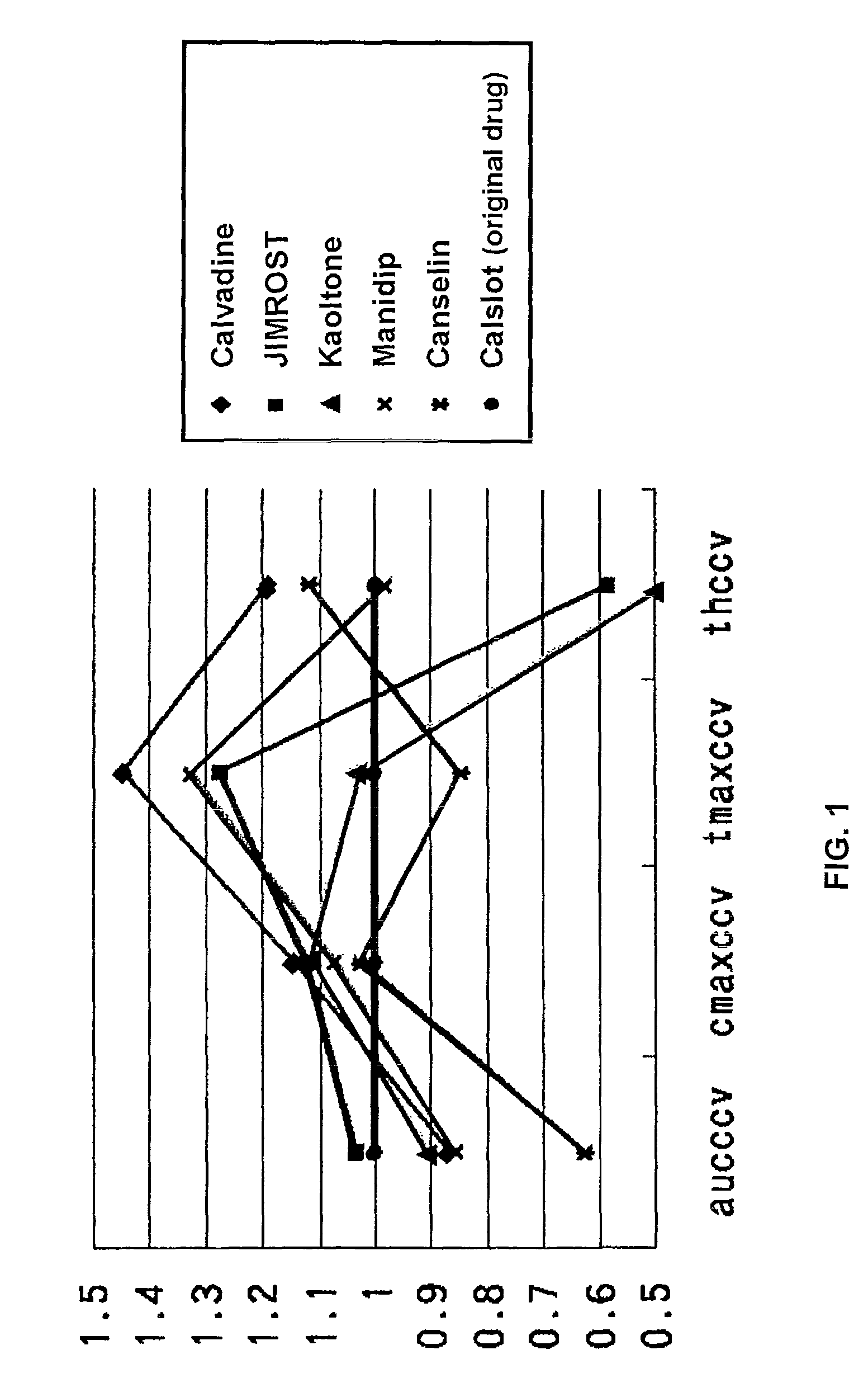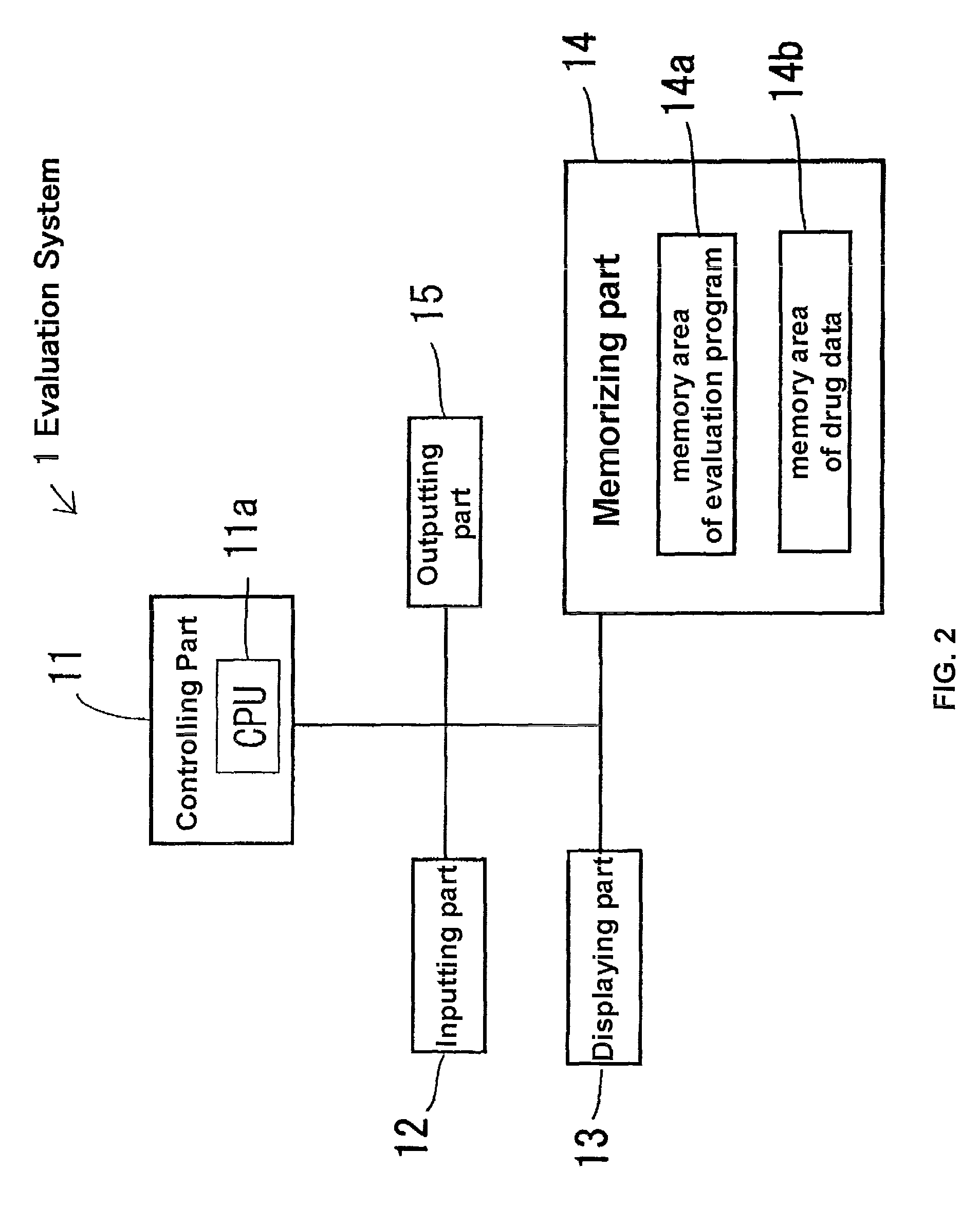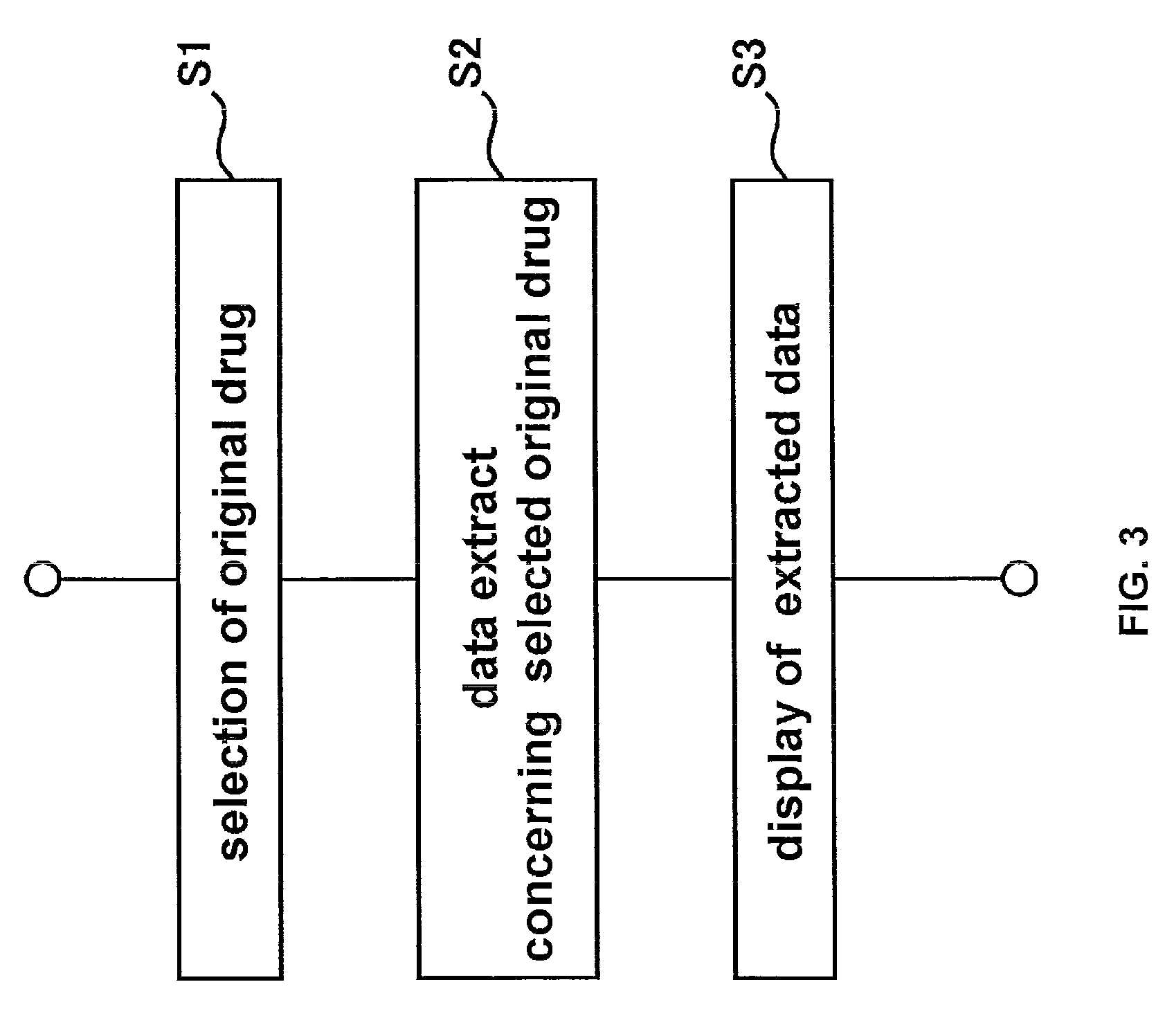Bioequivalence evaluation method of evaluating bioequivalence of a generic drug to the corresponding original drug
a bioequivalence and evaluation method technology, applied in the field of bioequivalence evaluation method of evaluating the bioequivalence of a generic drug to the corresponding original drug, can solve the problems of not being able to compare the data with those of other makers, not being able to make a comparison between generic drugs, and being difficult to have a discussion solely by drawing individual data
- Summary
- Abstract
- Description
- Claims
- Application Information
AI Technical Summary
Benefits of technology
Problems solved by technology
Method used
Image
Examples
Embodiment Construction
[0057]In the bioequivalence evaluation system of this invention, firstly, data of the maximum blood concentration (Cmax), the time-to-maximum blood concentration (Tmax), the half-life (T1 / 2) or the mean residence time (MRT), and the blood concentration-area under the curve (AUC) or the relative absorption rate (F) after administration in the case of administration of an original drug and a corresponding generic drug are arranged. These data can be introduced with ease from the existing data (such data is described in what is called “orange book” in Japan)
[0058]Then, the standard deviation (SD) is calculated from each of these data, and each variation coefficient (CV) is obtained by dividing the standard deviation (SD) by the average value, and further the calibration coefficient of variation (CCV) is obtained by dividing the variation coefficient (CV) by the variation coefficient of the original drug (CVs). Accordingly, as to the original drug as a standard, the calibration coeffici...
PUM
| Property | Measurement | Unit |
|---|---|---|
| CV | aaaaa | aaaaa |
| CCV=CV/CVs | aaaaa | aaaaa |
| concentration | aaaaa | aaaaa |
Abstract
Description
Claims
Application Information
 Login to View More
Login to View More - R&D
- Intellectual Property
- Life Sciences
- Materials
- Tech Scout
- Unparalleled Data Quality
- Higher Quality Content
- 60% Fewer Hallucinations
Browse by: Latest US Patents, China's latest patents, Technical Efficacy Thesaurus, Application Domain, Technology Topic, Popular Technical Reports.
© 2025 PatSnap. All rights reserved.Legal|Privacy policy|Modern Slavery Act Transparency Statement|Sitemap|About US| Contact US: help@patsnap.com



